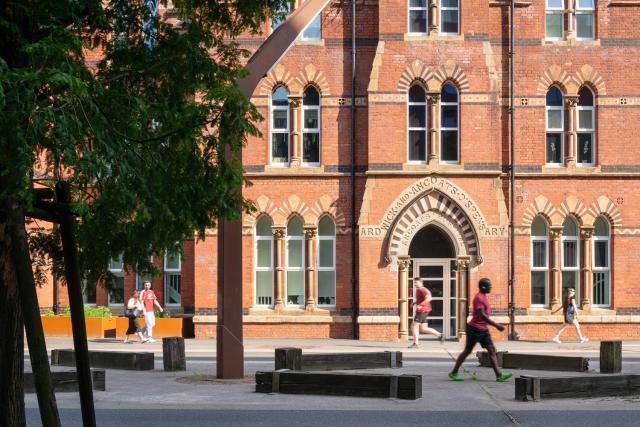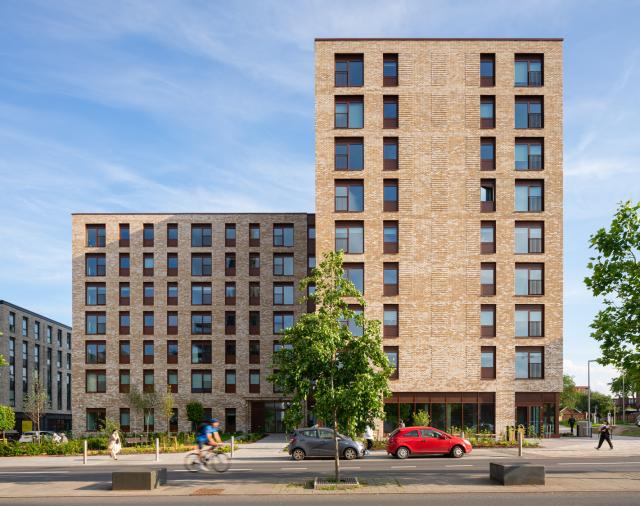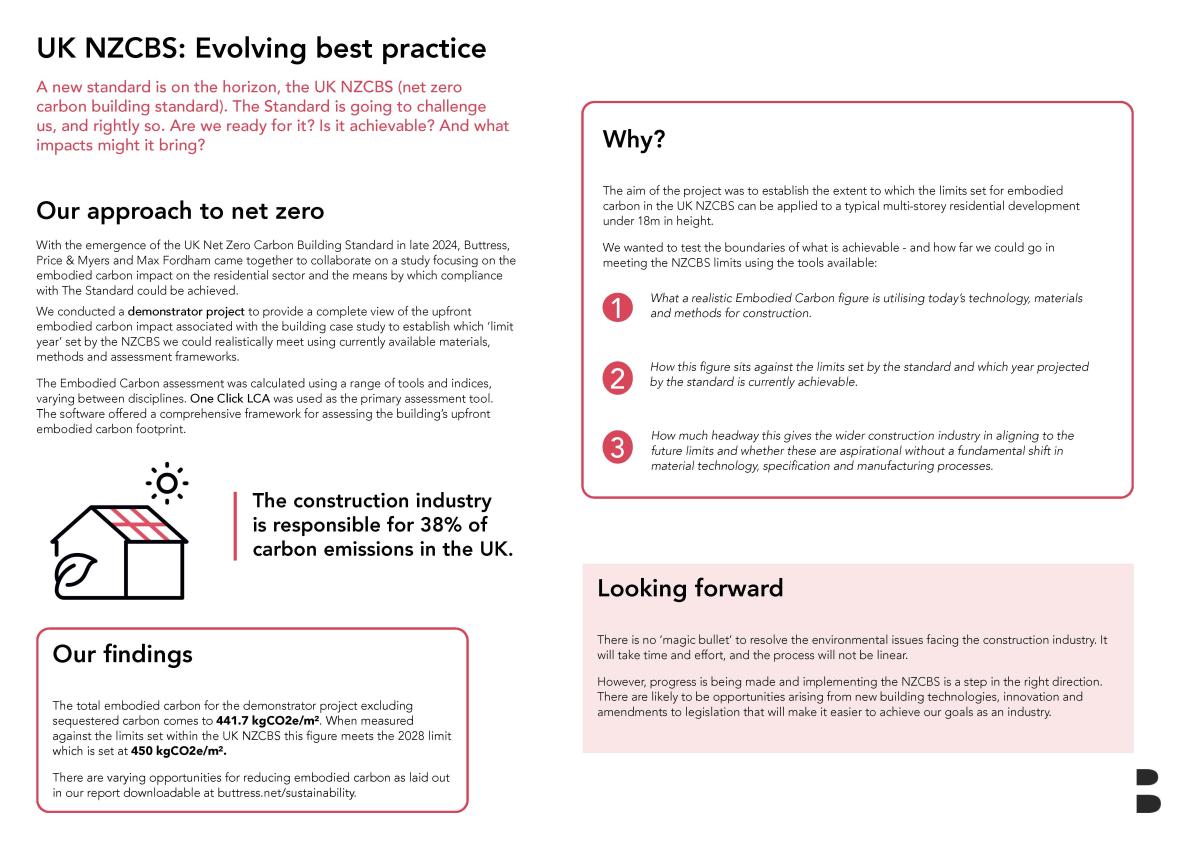

Evolving best practice means pushing ourselves, and our industry, further than currently feels comfortable.
The UK NZCBS is the UK’s first cross-industry standard that brings together net-zero carbon requirements for all major building types.
There has been a clear demand for a single methodology to unite the industry.
Our team has been working with experts from Max Fordham and Price & Myers to test the new Standard against existing building forms, which we know showcase commercially viable sustainability features. We've found that while the limits identified in The Standard are achievable, they are far from easy; it is and should be challenging.
We are in a decisive moment where the ambition and technical skills are aligning to create a clear roadmap, and the UK NZCBS rightly sets a high bar to ensure we deliver buildings that are truly fit for the future.
We are evaluating current best practice against the new Standard to understand how far into the future our current expertise and material technologies will carry us.
Our demonstrator project
With the emergence of the UK Net Zero Carbon Building Standard (NZCBS) in late 2024, Buttress, Price & Myers and Max Fordham collaborated on a demonstrator project focusing on the embodied carbon impact on the residential sector and the means by which compliance with The Standard could be achieved.
We conducted a demonstrator project to provide a complete view of the upfront embodied carbon impact associated with a residential building case study. This was to establish which ‘limit year’ set by the NZCBS could realistically be met using currently available materials, methods and assessment frameworks.
The embodied carbon assessment was calculated using a range of tools and indices, varying between disciplines. One Click LCA (Lifetime Carbon Assessment) was used as the primary assessment tool for architectural elements. The software offered a comprehensive framework for assessing the building’s upfront embodied carbon footprint.

Why?
The aim of the study was to establish the extent to which the limits set for embodied carbon in the UK NZCBS can be applied to a typical multi-storey residential development under 18m in height.
We wanted to test the boundaries of what is achievable - and how far we could go in meeting the NZCBS limits using the tools available:
- What a realistic embodied carbon figure is utilising today’s technology, materials and methods for construction?
- How does this figure sit against the limits set by The Standard, and which year projected by The Standard is currently achievable?
- How much headway does this give the wider construction industry in aligning with future limits, and whether they are aspirational without a fundamental shift in material technology, specification and manufacturing processes?
Our findings
The total embodied carbon for the building study comes to 441.7 kgCO2e/m².
When measured against the limits set within the UK NZCBS this figure meets the 2028 limit, which is set at 450 kgCO2e/m².
Download our report for more insights into reducing embodied carbon.
Looking forward
There is no 'magic bullet' to resolve the environmental issues facing the construction industry. It will take time and effort, and the process will not be linear.
However, progress is being made, and implementing the NZCBS is a step in the right direction.
There are likely to be opportunities arising from new building technologies, innovation and amendments to legislation that will make it easier to achieve our goals as an industry. In sharing this demonstrator project, we hope to contribute practical evidence that can help the industry move confidently from aspiration to delivery, and ensure that net zero in residential design is not just a target, but an evolving, achievable reality.
What is NZCBS?
The UK Net Zero Carbon Buildings Standard (UKNZCBS) has been developed to provide a clear and consistent way for the built environment industry to determine whether a building is truly Net Zero Carbon and aligned with the UK’s climate goals.
It applies to both new and existing buildings across 13 sectors in the UK and sets out clear requirements for:
- New Build
- Retrofit (One Go or Step-by-Step)
- Office Fit-Out
The Pilot Version of The Standard includes a detailed technical specification that can already be integrated into project briefs and used on live projects. Pilot testing began in early 2025 to gather industry feedback on The Standard’s practical application.
Why does it matter?
The built environment is responsible for around 38% of the UK’s carbon emissions. To meet the 2050 climate target and avoid the worst impacts of climate change, we must go beyond current building regulations.
But the benefits go beyond emissions:
- Customers are actively seeking environmentally responsible choices and are often willing to pay more for them.
- Investors increasingly prioritise long-term, sustainable projects with credible strategies
- Adopting The Standard now can ensure that buildings meet both current and future regulations, future-proofing your buildings
What about cost?
Referencing a pilot study undertaken by the UK Green Building Council, a capital uplift is identified as:
- 3.5% for residential projects
- 6.3% for office buildings
However, these costs are typically offset over time through:
- Lower operational costs (due to energy efficiency)
- Falling technology costs (e.g. the cost of photovoltaics has dropped by ~80% in the past decade)
- Reduced maintenance
- Higher asset value
Research by the UK Green Building Council shows that high-performing developments can attract 6–11% higher rental value.
How does it work in practice?
Projects are assessed using carbon calculation tools against clear performance targets.
The limits are:
- Time-bound – they vary depending on the project’s start year
- Evidence-based – informed by real-world data on what’s practically achievable
- Balanced – they combine top-down carbon and energy budgets with bottom-up industry capability
For example, our joint pilot with Max Fordham and Price & Myers explores how to meet upfront embodied carbon limits in real projects. Upfront carbon is one of 11 aspects that The Standard considers.
What about verification?
Yes — independent verification is part of the process.
To demonstrate compliance, a building must undergo third-party verification after it has been in operation at agreed occupancy levels for at least 12 months. This is known as the Reporting Period End Point (RPEP).
At RPEP, a Net Zero Carbon Coordinator will gather all performance data and reporting evidence. If verification is successful, the development can be publicly declared as either:
- Net Zero Carbon Aligned Building
- Net Zero Carbon Aligned Building (plus offsets)